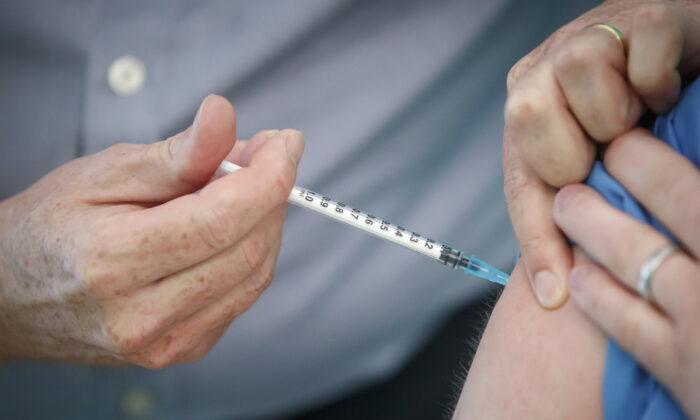A 17-year-old from Australia has gone public about her 14 months of suffering from post-vaccination symptoms after receiving a COVID-19 vaccine.
Faith, a teenager from Tasmania, received her second Pfizer vaccine dose in August 2021 and became sick three days later. She has since been unable to attend school.
Faith’s mother, Tanya, said her whole family was not “anti-vax” but that they had been “left hanging” after Faith started experiencing severe abdominal pain.
“I did actually ask the question then: ‘Could it have been the vaccine?’ And I was actually told by the surgeons to not be so, and I quote ‘bloody stupid.’”
The doctors of the local hospital believed there was something wrong with Faith’s appendix, so they had it removed, despite later finding it had been perfectly fine. But after the surgery, she continued to cry about the pain.
“So then began a learning process. It was mainly abdominal pain to begin with. And fatigue, she was so fatigued. She was hardly eating, you know, she just couldn’t get food down,” Tanya said.
Her family went on to seek countless tests and screenings for months to figure out the reason for her pain.
Faith started experiencing severe muscle tics and spasms two months after the ordeal began.

Then on Nov. 18, 2021, a specialist said there was “no question” Faith had experienced a delayed reaction to the second vaccination.
Despite recognising the Pfizer vaccine as the reason for her symptoms, Faith was not given a treatment plan to help her start recovering.
Further, some other doctors said they had never seen anything like it before and didn’t know what to do, while others told Faith and her family that they didn’t think it was the vaccine.
One paediatrician said he believed her muscle tics and sensitivity to light and sound were the results of too much screen time.
“So that’s the kind of thing we’ve been up against,” Tanya said.
Post-Vaccine Symptoms
Similarly to long COVID, post-vaccine syndrome is driven by spike protein load and damage from spike exposure.Dr. Paul Marik, co-founder and chief scientific officer of FLCCC, previously told The Epoch Times that people who have post-vaccine symptoms predominantly experience “some degree of neurological impairment.”
Marik said post-vaccine symptoms are harder to treat and are more persistent compared to long COVID, with some patients presenting with debilitating symptoms for almost two years.
Therefore, treatment for people with post-vaccine symptoms is “more aggressive and more brain targeted,” said Marik.
Cardiologist Dr. Ross Walker said the COVID-19 vaccine “pulverised” Faith’s gut bacteria.

The federal government has a COVID vaccine injury claim scheme, however, Faith’s condition does not meet the criteria for the payout.
People who received the Pfizer or Moderna vaccine are only eligible if they are experiencing myocarditis, pericarditis, or a severe allergic reaction.
Federal budget papers, delivered on Oct. 25, revealed that payouts for COVID vaccine injuries for 2022-23 is expected to be 80 times higher than the 2021-22 estimates, at nearly $77 million (US$49 million).





